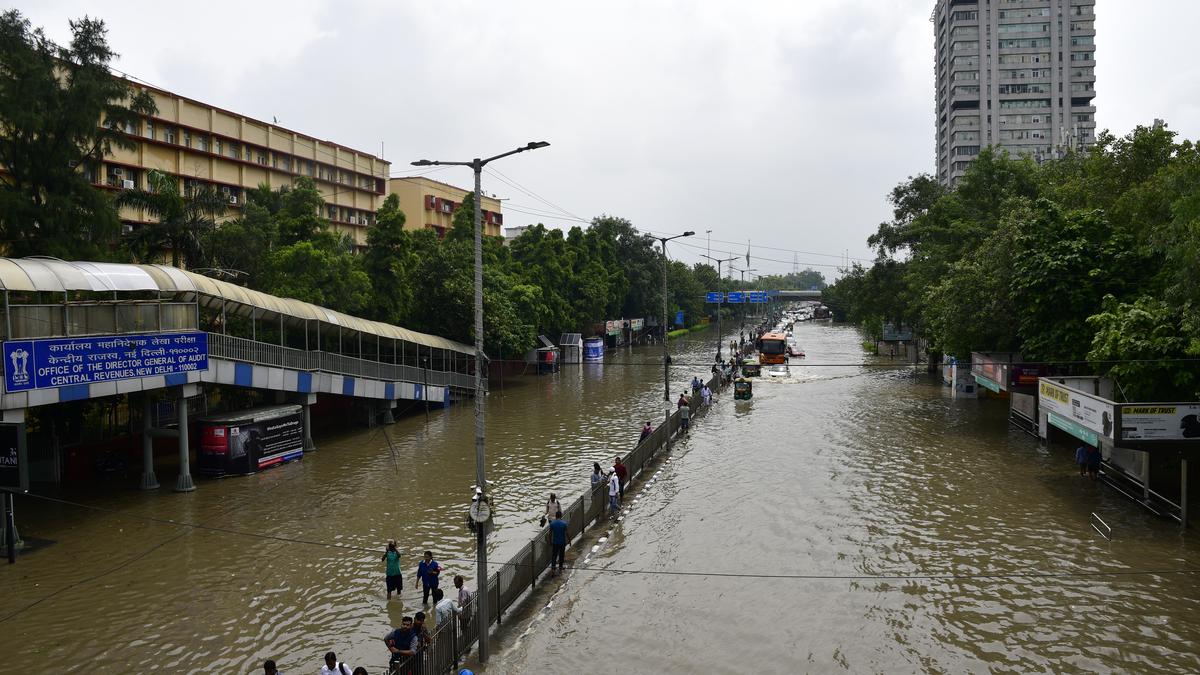
When the river rose Premium
The Hindu
Life came to a halt in several parts of Delhi, which received the highest monsoon rainfall in 40 years this July. Alisha Dutta and Nikhil M. Babu report on how encroachments as well as official developmental works continue to take place along the Yamuna river despite warnings by the National Green Tribunal
Every day, during the monsoon season, Rakhi Kumari, 18, checks the water levels of the Yamuna river near her house in Delhi. Her family of five, which lives in jhuggis (huts) on the floodplains of the river, has entrusted her with this responsibility.
In early July, when the monsoon was already well under way, Rakhi took a 20-minute walk from her house to the riverside to check if the water level had crossed the danger mark. “The monsoon season is always alarming for us,” said Rakhi, who runs a vocational unit in the area and teaches children how to stitch clothes. “Every year, the floodwater inundates our houses. We have made marks on trees on the river bed. This helps us decide when to pick up our belongings and take them to an elevated area.”
The Yamuna floodplains span nearly 10,000 hectares of land. They are cleaved by the river, which flows for 54 kilometres across Delhi. The silt deposited by the Yamuna, the longest tributary of the Ganga, sustains many khadars or urban agricultural settlements such as Rakhi’s. It enriches the soil and fosters crop production.
On that day, Rakhi saw the water level rise, but was relieved to find that it had not crossed the danger mark. However, on July 11, she and her neighbours began to panic as rains lashed the city and they found themselves in knee-deep water in just a few hours. Their jhuggis had never been so inundated in at least a decade. “When water is released from the Hathnikund barrage, it usually enters our homes and is ankle-deep. But this time, we found ourselves knee-deep in water. Soon, our houses were completely submerged,” Rakhi said while feeding her family’s only remaining buffalo.
Two of the buffaloes had drowned and two were yet to be traced. Rakhi and her family were forced to move to a make-shift tent on a flyover near a metro station. The government has set up some tents on Pusta Road, while other tents have been put up by the residents of Yamuna Khadar.
Delhi saw the highest 24-hour rainfall in 41 years for the month of July on July 9 (153 mm). But while the Yamuna’s floodwaters kept rising, and reached a peak on July 13, the city received only scattered rainfall. The spate of the Yamuna was due to heavy rainfall in Himachal Pradesh and other upper reaches, which are upstream of Delhi. While the government established relief camps in various areas, not all flood-affected people have received relief, they said.
Several States in north India received record rainfall in July. According to the India Meteorological Department (IMD), north-west India experienced 59% excess rainfall than what is normal in the first fortnight of July. This occurred due to active monsoon conditions and a passing ‘Western Disturbance’ or an extratropical storm originating in Central Asia. The excess rainfall resulted in flooding, water-logging, and loss of property, leaving some areas paralysed for days.











